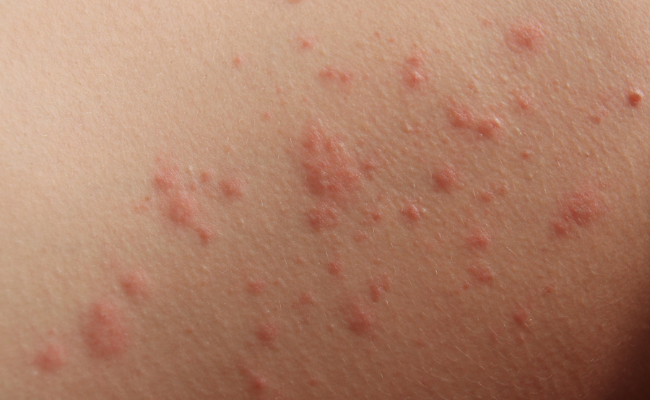How to Treat Contact Dermatitis?
- October 20, 2023
- No Comments

What is Contact Dermatitis?
Contact Dermatitis, a common dermatological issue, is characterized by inflammation when the skin encounters an irritant or allergen, resulting in red, itchy rashes. Despite the skin's protective role, exposure to certain substances prompts an inflammatory response. This condition is your skin's reaction to environmental irritants, leading to an itchy rash. "Dermatitis" denotes skin irritation or inflammation triggered by contact with irritating substances, organisms, objects, or chemicals.
Why Does Contact Dermatitis Occur?
Contact Dermatitis can occur for various reasons. It is typically a result of exposure to irritants or allergens. Irritant contact dermatitis is a non-allergic reaction to substances like soaps, detergents, or chemicals. On the other hand, allergic contact dermatitis arises when the immune system reacts to a specific substance, often after previous exposure has sensitized the individual.
Common triggers include personal care products, cleaning agents, certain metals like nickel, plants such as poison ivy, and medications. The severity of the reaction can vary from person to person, and repeated exposure may increase sensitivity.
How to Identify Contact Dermatitis?
Identifying Contact Dermatitis involves recognizing its characteristic symptoms. Affected individuals may experience redness, itching, swelling, and the development of blisters or dry, cracked skin. The location of the rash often corresponds to the area that came into contact with the triggering substance. Allergic contact dermatitis reactions typically occur 24 to 48 hours after exposure, while irritant contact dermatitis can manifest more immediately.
Treatment Solutions for Contact Dermatitis
- Avoidance of Triggers: The first and crucial step in managing Contact Dermatitis is identifying and avoiding the substances causing the reaction. This may involve scrutinizing personal care product labels, changing detergents, or using protective equipment.
- Topical Steroids: Over-the-counter or prescription-strength topical corticosteroids are commonly used to reduce inflammation and alleviate itching. These are applied directly to the affected skin and can be a highly effective treatment.
- Moisturizers: Regular application of moisturizers helps maintain skin hydration, preventing dryness and reducing the severity of symptoms. This is especially important in the recovery phase.
- Antihistamines: Oral antihistamines can provide relief from itching. Non-drowsy options are available for daytime use, while sedating antihistamines may be used at night to aid sleep and prevent excessive scratching.
- Wet Compresses: Applying wet compresses or soaking the affected area in cool water can soothe the skin, reduce inflammation, and promote healing.
- Topical Calcineurin Inhibitors: In cases where steroids are not suitable or for sensitive areas of the skin, topical calcineurin inhibitors like tacrolimus and pimecrolimus may be prescribed.
- Oral Corticosteroids: For severe cases, oral corticosteroids may be prescribed for a short duration to control inflammation. Prolonged use of oral steroids is generally avoided due to potential side effects.
Benefit Points of Treating Contact Dermatitis
- Symptom Relief: Treatment provides immediate relief from bothersome symptoms, such as itching, redness, and swelling, enhancing the overall comfort of the affected individual.
- Prevention of Complications: Timely and appropriate treatment helps prevent complications, such as bacterial infections that may arise due to scratching and open sores.
- Improved Quality of Life: Effectively managing Contact Dermatitis contributes to an improved quality of life by minimizing discomfort and allowing individuals to engage in daily activities without hindrance.
- Preventing Recurrence: Identifying and avoiding triggers not only treats the current episode but also helps prevent future occurrences of Contact Dermatitis.
- Customized Treatment Approach: Treatment plans can be tailored to the specific needs and preferences of the individual, ensuring a personalized and effective approach to managing Contact Dermatitis.
Comments (0)